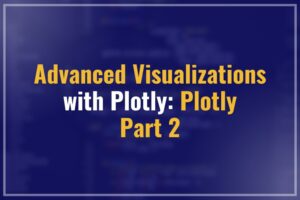
The demand for a skilled full-stack developer is rising as a result of the world’s growing reliance on apps. This dependence does not appear to be waning anytime soon. Tech careers can be terrifying. However, those who are willing to put up with the challenging learning curve frequently receive generous rewards for their perseverance.
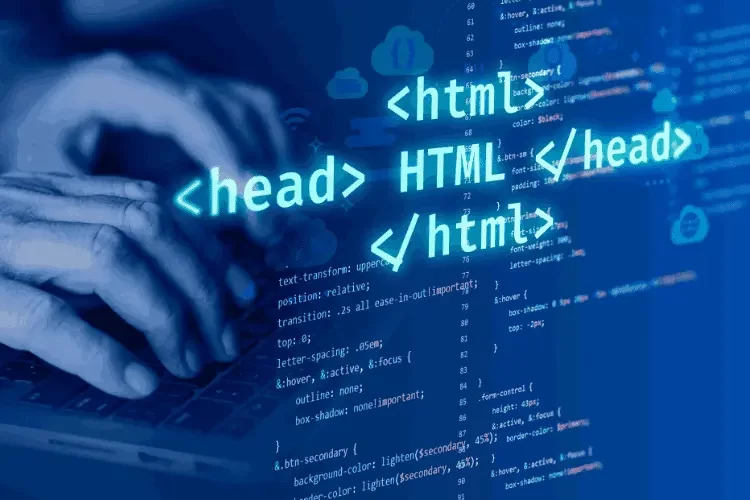
The road to becoming a full-stack developer is not particularly easy and can be challenging. The following guide was created to walk you through the necessary procedures and provide you with a better understanding of what the early phases of the career path entail.
Web development can be categorized into two different groups. Backend web development, as the name suggests, focuses on background-using elements like servers, databases, APIs, and other things.
The other part of web development is called front-end development, and it deals with user-facing components such as graphical elements, design, and user interface.
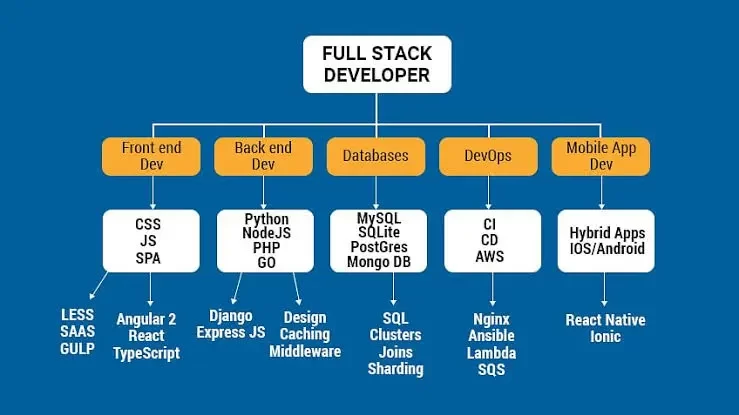
Therefore, a developer who is capable of handling both frontend and backend tasks is referred to as a “full-stack developer.” Full-stack developers frequently have a greater capacity for adaptation and an overall better understanding of design projects.
Due to their working knowledge of both front-end and back-end development, full-stack developers have a great deal of professional freedom. They have the freedom to move around large-scale projects and offer help everywhere, as well as build websites and web apps entirely on their own.
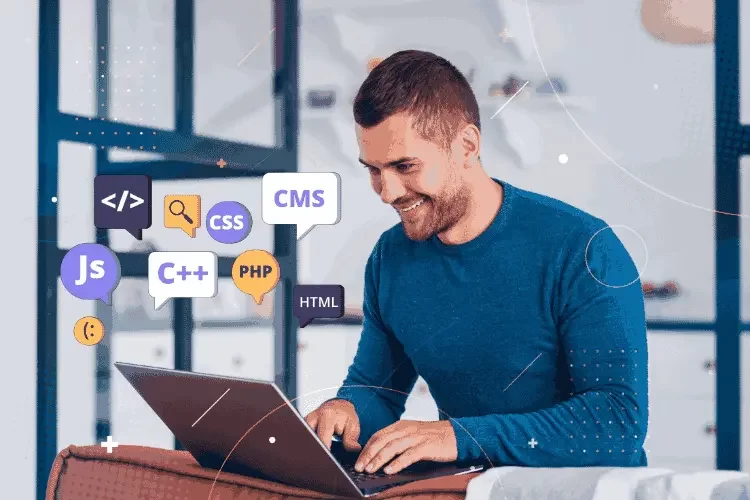
Businesses need experienced Full-Stack engineers greatly because they not only save money but also enhance collaboration and communication. Full-stack engineers have the skills to manage a network, write code, work with databases, help clients, and even sell. This is one advantage of being knowledgeable about every facet of a project.
The plan and a little bit of work are all that stand in the way of a brand-new job. Although we are unable to assist you with the effort part, a quick scroll down will reveal a helpful trick. You can anticipate learning more about programming languages, learning resources, portfolios, and a ranking of the top 10 full-stack developer skills.
The road to becoming a full-stack developer might be very different for each individual. Many ambitious young professionals want to study full-stack programming, which has caused an explosion of companies to provide their services as instructors. This implies that each student has the freedom to select how they want to study.
You might be able to save some money by teaching yourself. Internet research is a veritable gold mine of information just waiting to be found by independent thinkers like you. Books, YouTube tutorials, podcasts, and at-home practice projects are excellent ways to advance your professional career and are a great addition to more conventional learning techniques.
Full-stack internships give ambitious developers the chance to gain real-world experience while getting paid for it. There are lots of opportunities for full-stack developer internships available to students who are enrolled in computer science programs, but there are always exceptions.

At all levels of competency, online and offline certification programs are common. If you need flexibility and structure, certificate programs can provide it, whether you’re trying to start from scratch or just brush up on a few skills. The majority of certificate programs only take a few months to complete, so they are also somewhat constrained.
A full-stack programming boot camp is a fantastic way to pick up new skills or improve on ones you already have. Additionally, their three to six-month schedules encourage efficient learning. Also, the Bootcamps are intended for those who can learn a lot of material quickly and desire to learn it quickly. They are also far less expensive than degree programs.
Self-guided courses are also reasonably priced. You should conduct extensive research before enrolling in a course because course quality can vary widely. Having said that, time-conscious students have a far better option with separate full-stack development classes.
If you have the time and resources, getting a bachelor’s degree in programming, computer science, or web development may make sense. Also, formal schooling looks great on a resume. Although you could probably pick up all the abilities on your own, there are some advantages to following a tried-and-true college-style curriculum.
The more programming languages you are fluent in, the more appealing you are to potential employers. Because of this, web developers’ success is greatly influenced by their readiness to learn novel and cutting-edge programming languages.
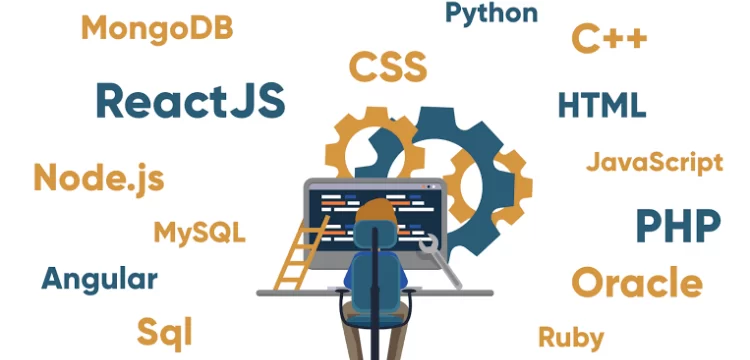
Every self-respecting full-stack developer would benefit from learning a few front and back-end programming languages, though, to get started.
If you ever want to claim the label of full-stack developer, you’ll need to have a firm knowledge of the programming languages that guarantee the functionality of an app’s visual components.
Thus, a full-stack developer should be familiar with the front-end languages and frameworks listed below:
If the internal workings aren’t functioning properly, the user experience doesn’t signify much. To ensure that, one must be familiar with the main back-end programming technologies and frameworks so that the websites continue to be functional. For eg: Javascript
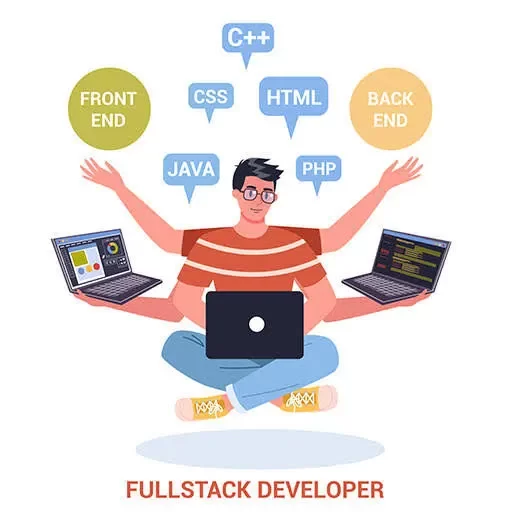
The following back-end frameworks and technologies are expected of a full-stack developer:
Your resume serves as your first impression. It demands constant attention. Visit it frequently to make sure that it consistently showcases you at its finest. The stories behind the achievements you emphasize in a prosperous portfolio are also useful for validating your skills.
A CV fills a lot of gaps in your portfolio. Here, you can go into further detail about your background in work, your schooling, and your skill set. Most resumes don’t leave much space for individuality, but a well-edited and arranged submission can say a lot.
And, therefore, remember that even the most outstanding portfolio can be damaged by a resume that has several errors.
Preparation is just as important for acing a job interview as charisma. Prepare answers to the most common full-stack developer interview questions, have stories and experiences that positively reflect your ready, and research the company.
The most essential thing is, to be honest. Exaggerations and lies seldom work in the long run, and they’ll probably come back to bite you.
For websites and online apps to operate properly, we need several components. They need a server, an operating system, database software, and a programming language specifically.
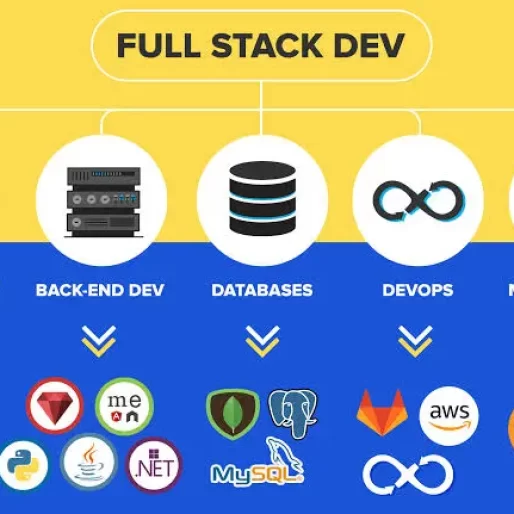
A successful full-stack developer would do well to master the use of at least one of the three items listed below. And, so, that group of elements is known as the software stack.
One of the most well-known and reliable software stacks available is LAMP. The fact that every element on the list below is free to use also makes it simple for a beginner to pick it up and experiment at their convenience.
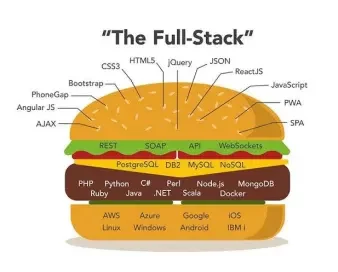
Everyone praises the MERN software stack’s adaptability. The following elements make up the widely used JavaScript-based stack:
Recently, the MEAN software stack has become more and more well-liked. Because it effectively speeds up the creation of websites and web apps, it is regarded as the optimal JavaScript software stack. To construct this stack, the following components are there:
Employers anticipate that full-stack experts will possess certain important competencies. Hence, the majority of people’s “how to become a full-stack developer” checklists begin to resemble one another worryingly.
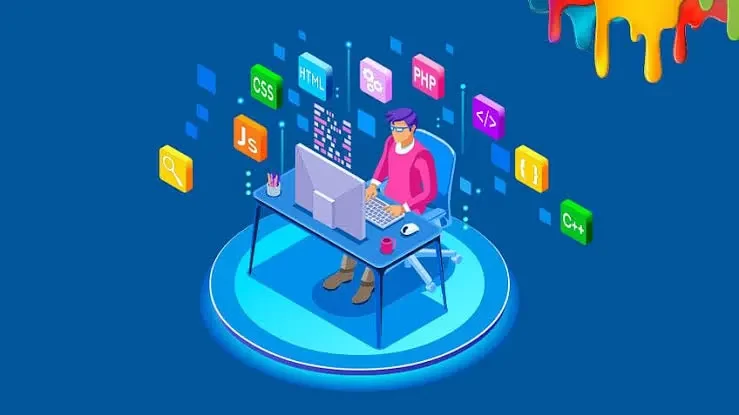
The competent full-stack developer never actually stops learning, however, you should begin your education by becoming proficient in the following 10 fundamentals:
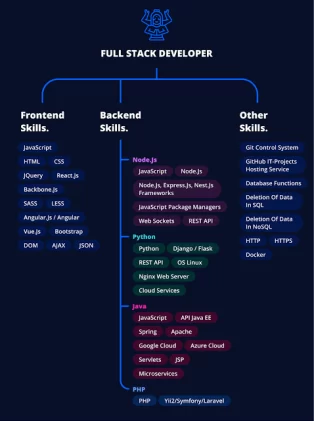
Software frameworks provide a base for developers to work from. Even though its universal design may be advantageous, using one can save a lot of time. Therefore. there are numerous choices for front-end, back-end, and mobile frameworks.
Thus, Full-stack engineers are typically expected to have a working understanding of the frameworks on the list below, which are constantly developing.
We provide online certification in Data Science and AI, Digital Marketing, Data Analytics with a job guarantee program. For more information, contact us today!
Courses
1stepGrow
Anaconda | Jupyter Notebook | Git & GitHub (Version Control Systems) | Python Programming Language | R Programming Langauage | Linear Algebra & Statistics | ANOVA | Hypothesis Testing | Machine Learning | Data Cleaning | Data Wrangling | Feature Engineering | Exploratory Data Analytics (EDA) | ML Algorithms | Linear Regression | Logistic Regression | Decision Tree | Random Forest | Bagging & Boosting | PCA | SVM | Time Series Analysis | Natural Language Processing (NLP) | NLTK | Deep Learning | Neural Networks | Computer Vision | Reinforcement Learning | ANN | CNN | RNN | LSTM | Facebook Prophet | SQL | MongoDB | Advance Excel for Data Science | BI Tools | Tableau | Power BI | Big Data | Hadoop | Apache Spark | Azure Datalake | Cloud Deployment | AWS | GCP | AGILE & SCRUM | Data Science Capstone Projects | ML Capstone Projects | AI Capstone Projects | Domain Training | Business Analytics
WordPress | Elementor | On-Page SEO | Off-Page SEO | Technical SEO | Content SEO | SEM | PPC | Social Media Marketing | Email Marketing | Inbound Marketing | Web Analytics | Facebook Marketing | Mobile App Marketing | Content Marketing | YouTube Marketing | Google My Business (GMB) | CRM | Affiliate Marketing | Influencer Marketing | WordPress Website Development | AI in Digital Marketing | Portfolio Creation for Digital Marketing profile | Digital Marketing Capstone Projects
Jupyter Notebook | Git & GitHub | Python | Linear Algebra & Statistics | ANOVA | Hypothesis Testing | Machine Learning | Data Cleaning | Data Wrangling | Feature Engineering | Exploratory Data Analytics (EDA) | ML Algorithms | Linear Regression | Logistic Regression | Decision Tree | Random Forest | Bagging & Boosting | PCA | SVM | Time Series Analysis | Natural Language Processing (NLP) | NLTK | SQL | MongoDB | Advance Excel for Data Science | Alteryx | BI Tools | Tableau | Power BI | Big Data | Hadoop | Apache Spark | Azure Datalake | Cloud Deployment | AWS | GCP | AGILE & SCRUM | Data Analytics Capstone Projects
Anjanapura | Arekere | Basavanagudi | Basaveshwara Nagar | Begur | Bellandur | Bommanahalli | Bommasandra | BTM Layout | CV Raman Nagar | Electronic City | Girinagar | Gottigere | Hebbal | Hoodi | HSR Layout | Hulimavu | Indira Nagar | Jalahalli | Jayanagar | J. P. Nagar | Kamakshipalya | Kalyan Nagar | Kammanahalli | Kengeri | Koramangala | Kothnur | Krishnarajapuram | Kumaraswamy Layout | Lingarajapuram | Mahadevapura | Mahalakshmi Layout | Malleshwaram | Marathahalli | Mathikere | Nagarbhavi | Nandini Layout | Nayandahalli | Padmanabhanagar | Peenya | Pete Area | Rajaji Nagar | Rajarajeshwari Nagar | Ramamurthy Nagar | R. T. Nagar | Sadashivanagar | Seshadripuram | Shivajinagar | Ulsoor | Uttarahalli | Varthur | Vasanth Nagar | Vidyaranyapura | Vijayanagar | White Field | Yelahanka | Yeshwanthpur
Mumbai | Pune | Nagpur | Delhi | Gurugram | Chennai | Hyderabad | Coimbatore | Bhubaneswar | Kolkata | Indore | Jaipur and More